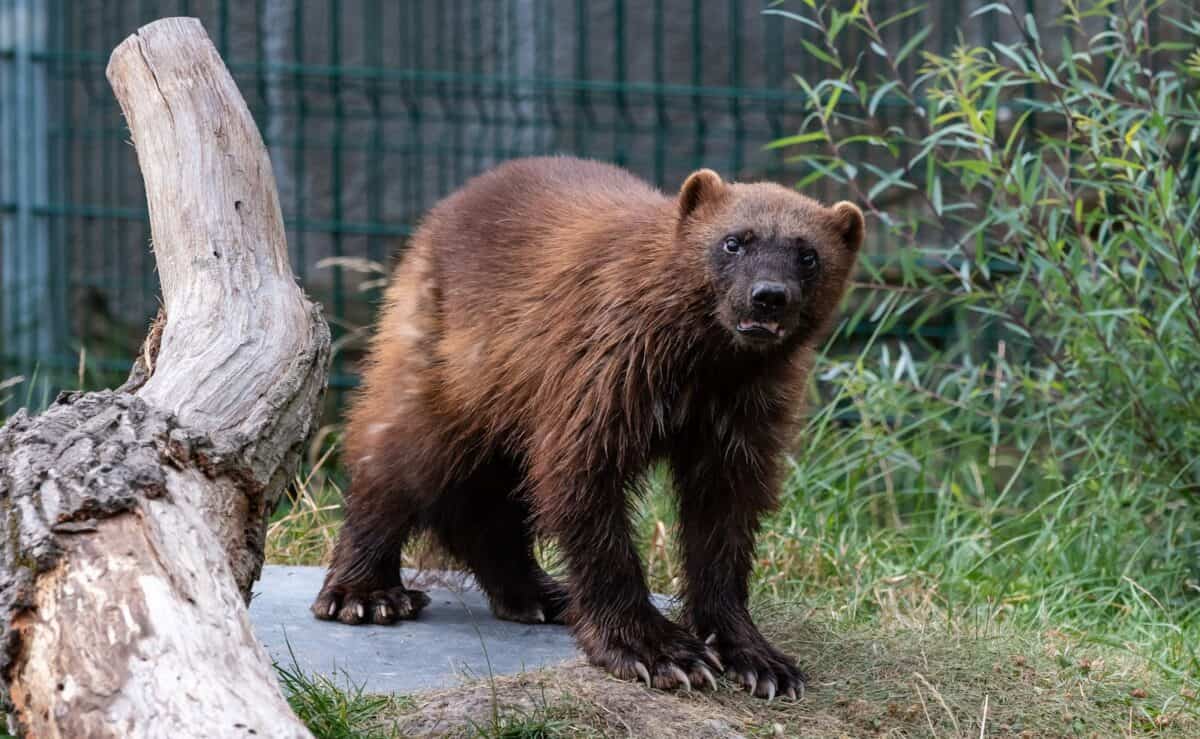When winter’s icy grip tightens across vast landscapes, most creatures retreat, hibernate, or migrate to warmer climes. Yet amid these frigid environments, some remarkable animals not only survive but flourish. Through extraordinary adaptations developed over millennia of evolution, these resilient species have conquered some of Earth’s most inhospitable conditions. From the windswept Arctic tundra to the frozen expanses of Antarctica, these cold-weather specialists showcase nature’s incredible ability to adapt and thrive where others simply cannot. Let’s explore thirteen wild animals that have mastered the art of living in extreme cold, examining their unique survival strategies and the remarkable physiological and behavioral adaptations that allow them to call these frozen wonderlands home.
12. Arctic Fox The Cold Weather Chameleon

The Arctic fox (Vulpes lagopus) is perhaps nature’s most perfect cold-weather specialist, capable of surviving in temperatures as low as -70°F (-57°C). These small canids have evolved a suite of adaptations that make them ideally suited for life in the Arctic. Their most visible adaptation is their thick, luxurious fur that changes seasonally—snow-white in winter for camouflage against the snow and a brownish-gray in summer. This remarkable coat has the best insulating properties of any mammal, keeping them warm even in the harshest conditions.
Beyond their beautiful fur, Arctic foxes possess compact bodies with short legs, ears, and muzzles—all adaptations that minimize heat loss by reducing surface area. Their furry-soled paws act as natural snowshoes while protecting them from the frozen ground. Arctic foxes are also metabolic marvels, maintaining their body temperature without increasing their metabolic rate until temperatures drop below -31°F (-35°C). When food is scarce, they can lower their metabolic rates and remain active while using less energy—a rare trait among mammals that allows them to survive the resource-scarce Arctic winter.
11. Polar Bear The Arctic’s Apex Predator

Polar bears (Ursus maritimus) reign as the undisputed kings of the Arctic, having perfected cold-weather living to an art form. These massive predators, weighing up to 1,500 pounds, possess a layer of blubber up to 4.5 inches thick that provides exceptional insulation in sub-zero temperatures. This fatty layer works in conjunction with their thick, water-repellent coat composed of an insulating undercoat and longer guard hairs. Interestingly, their fur isn’t actually white—each hollow, transparent hair reflects visible light, creating the white appearance while also trapping heat from the sun.
Polar bears’ adaptations extend beyond their insulation. Their massive paws—measuring up to 12 inches in diameter—distribute their weight when walking on thin ice and function as powerful paddles for swimming. Small bumps called papillae on their footpads create friction against the ice, preventing slips. Their elongated bodies and necks enable efficient swimming and hunting in frigid waters, while a specialized liver and kidneys allow them to process the high-fat seal diet that fuels their survival in this extreme environment. As climate change threatens their sea ice hunting grounds, these magnificent cold-weather specialists face unprecedented challenges to their specialized way of life.
10. Musk Ox Living Relics of the Ice Age
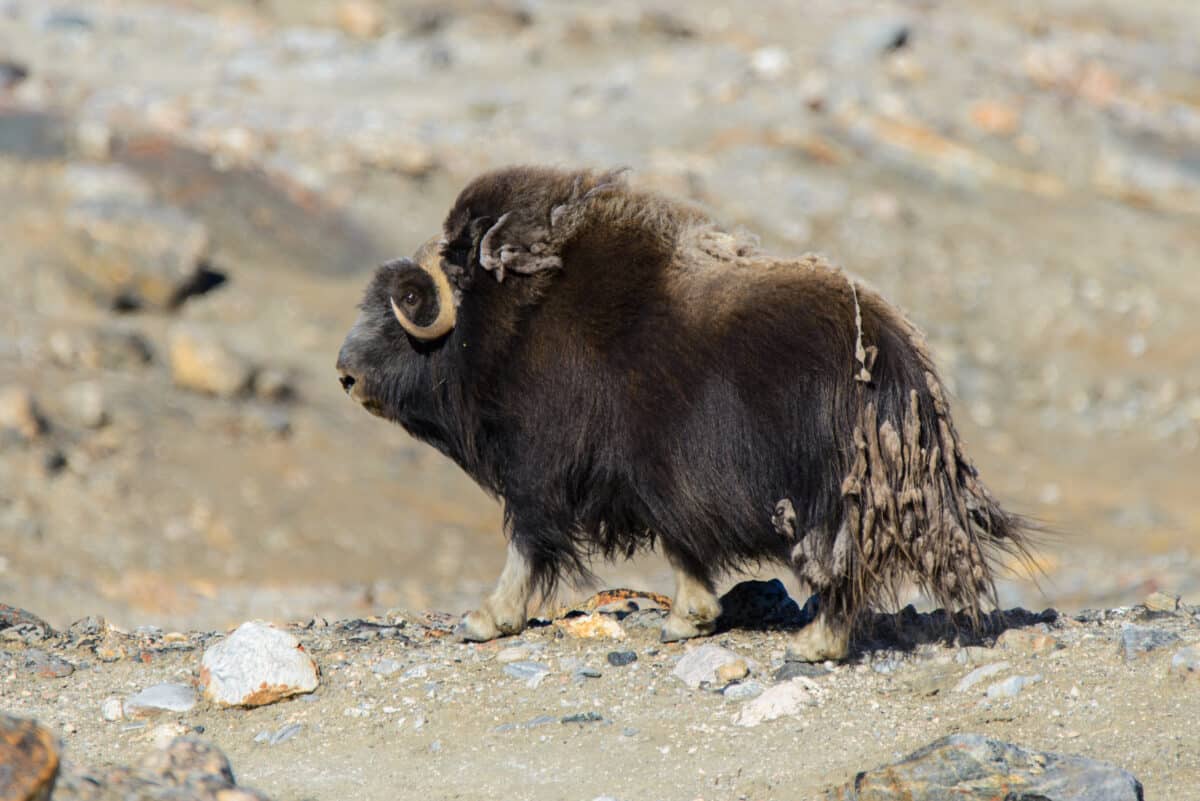
Musk oxen (Ovibos moschatus) represent living connections to the Ice Age, having shared the tundra with now-extinct woolly mammoths. These shaggy behemoths have survived in the Arctic for thousands of years thanks to their extraordinary cold-weather adaptations. Their most impressive feature is their double-layered coat—a soft, insulating underwool called “qiviut” that’s eight times warmer than sheep’s wool, covered by long outer guard hairs that can reach 24 inches in length. This remarkable insulation is so effective that snow can settle on their backs without melting, indicating minimal heat loss.
Beyond their impressive coats, musk oxen possess compact bodies with short legs and tails that minimize heat loss. Their metabolic rates drop in winter to conserve energy during food scarcity, and they develop extra fat reserves in autumn to serve as insulation and energy reserves. When threatened, these social animals form defensive circles with adults facing outward and calves protected in the center—a strategy that has helped them survive predation for millennia. Despite their resilience, musk oxen populations have faced historical challenges from overhunting, though conservation efforts have helped stabilize numbers in many Arctic regions.
9. Emperor Penguin Antarctica’s Cold-Weather Champion
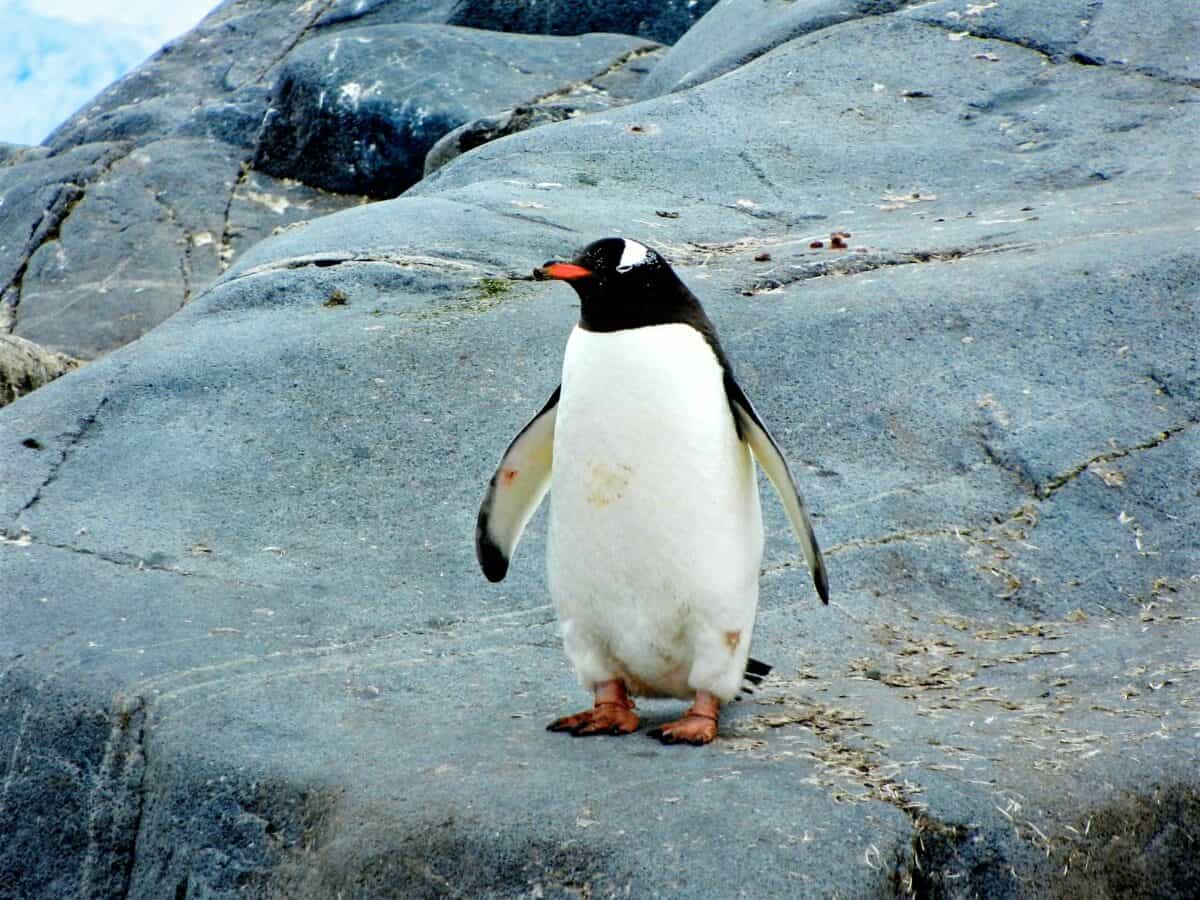
Emperor penguins (Aptenodytes forsteri) have mastered the art of surviving in Earth’s most extreme cold environment, enduring Antarctica’s winter temperatures that plummet to -76°F (-60°C) and winds exceeding 100 mph. These remarkable birds—the largest of all penguin species at up to 4 feet tall and 99 pounds—brave these conditions during their unique winter breeding cycle. Their dense, overlapping feathers create an impenetrable barrier against cold, while a thick layer of blubber provides additional insulation. The feather coverage is so effective that the emperors’ skin temperature can be 70°F higher than the surrounding air.
Perhaps the most fascinating adaptation of emperor penguins is their group behavior during extreme cold. Males, who incubate eggs while females return to sea to feed, form tight huddles of thousands of birds. In these remarkable formations, penguins rotate positions continuously, taking turns moving from the wind-protected center to the exposed perimeter, effectively sharing the thermal burden. This cooperative strategy, combined with their ability to reduce blood flow to extremities and employ specialized heat exchange systems in their legs, allows emperor penguins to maintain their core temperature while conserving energy during their remarkable four-month fast during egg incubation—a testament to nature’s ingenuity in the face of extreme conditions.
8. Snowy Owl Arctic Aerial Predator
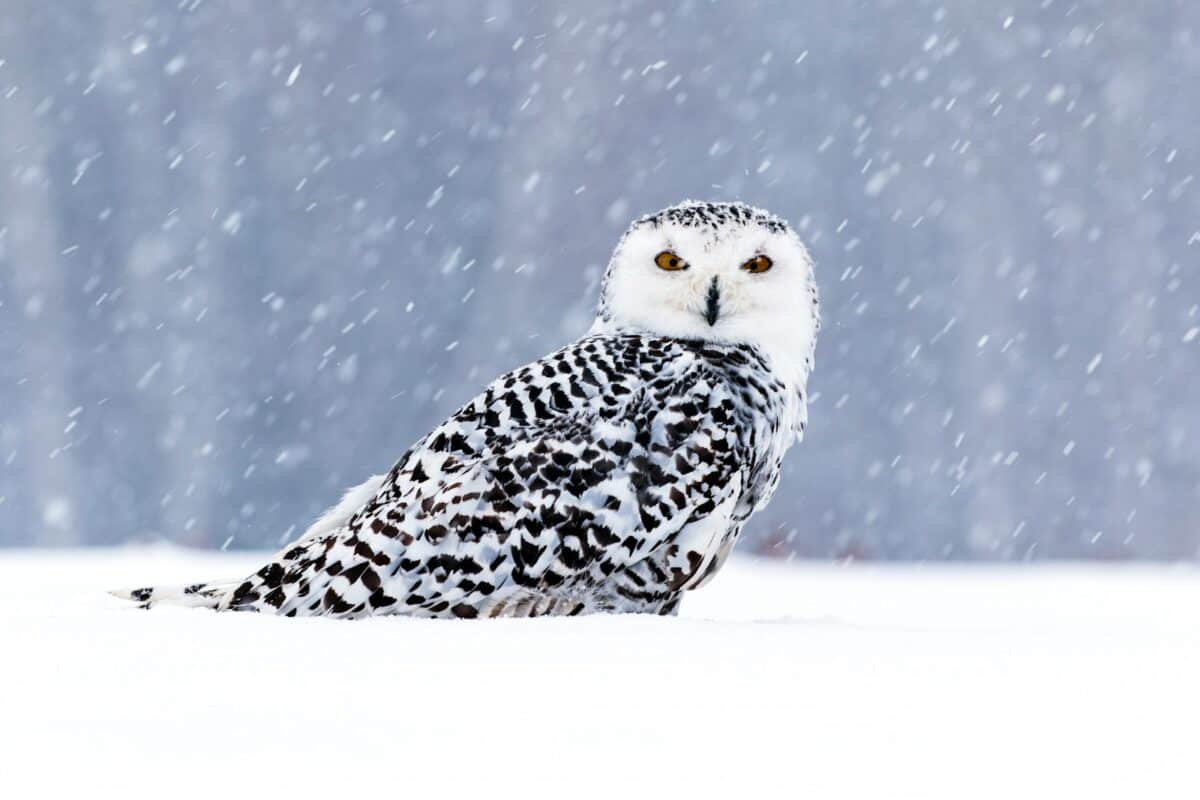
The snowy owl (Bubo scandiacus) is one of the few birds that remains in the Arctic year-round, equipped with remarkable adaptations for surviving temperatures that regularly plunge below -40°F. These magnificent birds possess dense feathering that covers their entire bodies—including their legs and feet, which are usually exposed in other owl species. Their plumage includes an exceptional layer of insulating down beneath weather-resistant outer feathers. Males tend to be almost entirely white, while females display more flecking with dark feathers, providing camouflage in the varied tundra landscape.
Snowy owls combine their superb insulation with behavioral adaptations that conserve energy during the harsh Arctic winter. Unlike most owls, they’re diurnal hunters, taking advantage of the limited daylight hours for hunting lemmings, ptarmigan, and other prey. When not hunting, they can lower their metabolic rate to conserve energy while maintaining sufficient body heat. Their specialized digestive system efficiently extracts maximum nutrition from their prey, important during periods of scarcity. These adaptations allow snowy owls to maintain their position as apex predators in one of Earth’s most challenging environments, though changing Arctic conditions due to climate change pose new challenges to their specialized lifestyle.
7. Arctic Hare Master of Camouflage
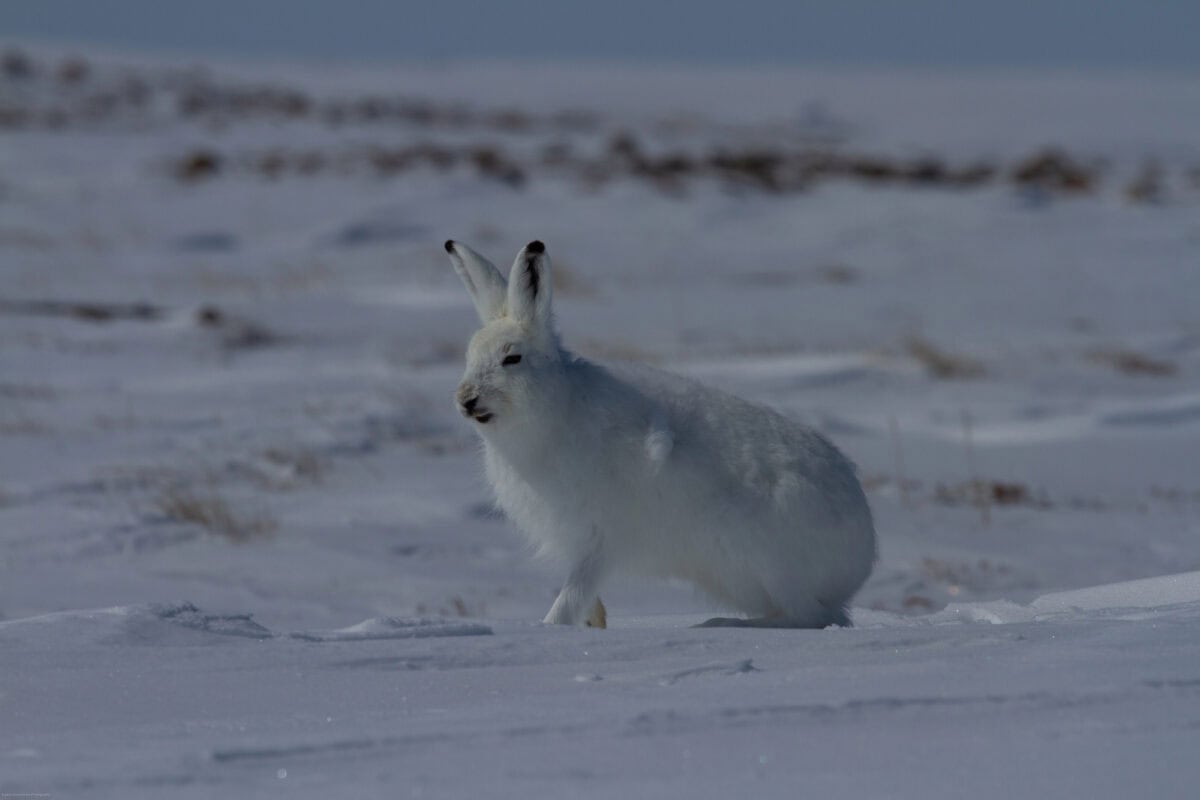
The Arctic hare (Lepus arcticus) has evolved remarkable adaptations that allow it to thrive in the northernmost regions of North America and Greenland, where winter temperatures routinely plunge below -40°F. These large lagomorphs can weigh up to 13 pounds, significantly larger than southern rabbit species, which provides a favorable surface-to-volume ratio that reduces heat loss. Their defining feature is their seasonal coat transformation; unlike many animals that change colors, the Arctic hare’s winter coat isn’t just white but possesses longer, denser fibers with superior insulating properties compared to their summer pelage.
Beyond their well-insulated coats, Arctic hares have evolved compact bodies with shortened ears and limbs to minimize heat loss through extremities. Their enlarged hind feet function as natural snowshoes and provide powerful propulsion, allowing them to reach speeds up to 40 mph when evading predators. Arctic hares have also developed specialized behaviors for extreme cold survival, including digging shallow depressions in the snow called “forms” that shield them from wind while utilizing the snow’s insulating properties. They can also shift their metabolism to extract maximum nutrition from limited winter vegetation, feeding on woody plants, mosses, and lichens that other herbivores cannot digest efficiently.
6. Wolverine The Cold-Loving Mustelid
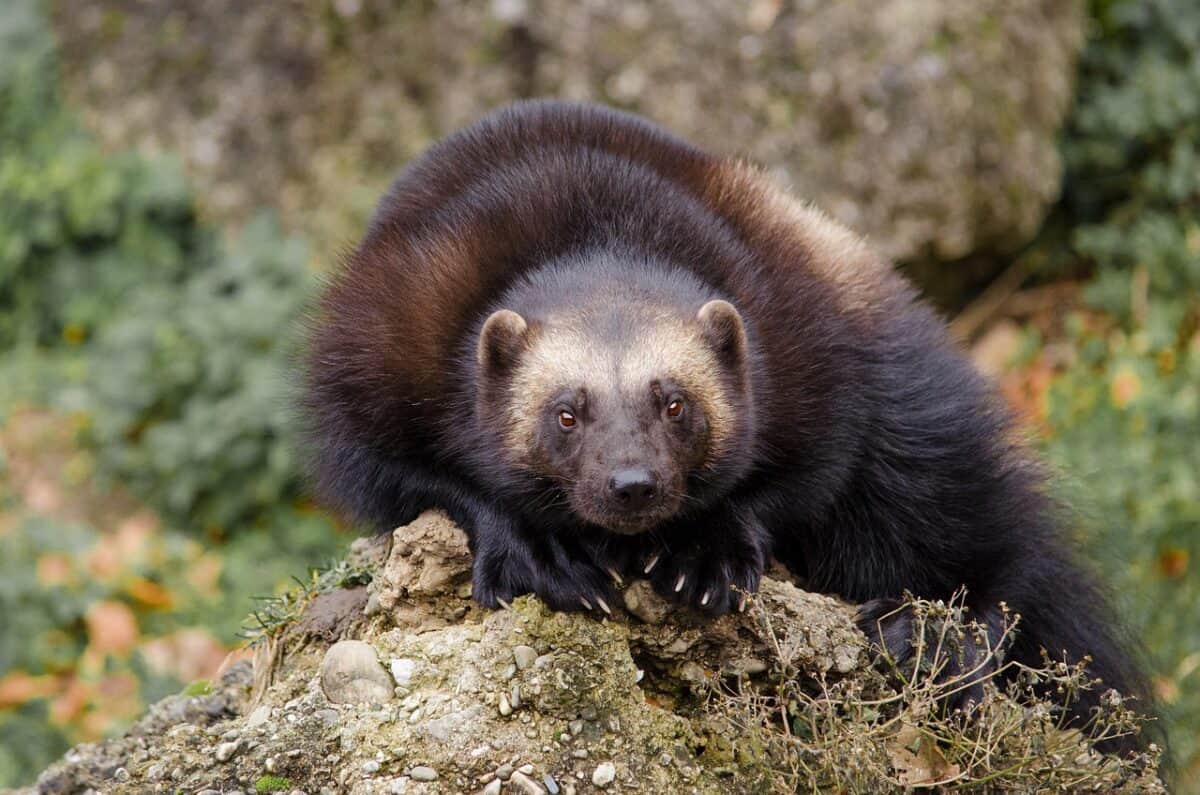
The wolverine (Gulo gulo) has rightfully earned its reputation as one of the toughest animals in cold environments, thriving in the northernmost forests and mountains of North America, Europe, and Asia. These stocky mustelids may weigh only 20-40 pounds, but their strength and cold resistance are legendary. Their incredibly thick, oily fur resists frost build-up and provides exceptional insulation—so effective that wolverines often sleep directly on snow without their body heat melting it. This specialized coat has historically made wolverines highly valued by Arctic indigenous peoples for lining parkas and winter clothing.
Wolverines possess remarkably large, specialized paws that serve as natural snowshoes, allowing them to travel efficiently across deep snow in search of food. Their powerful jaws and strong teeth can crush frozen meat and bone, enabling them to scavenge carcasses that other predators cannot access during winter. Wolverines maintain extraordinarily high metabolic rates that generate abundant body heat but require constant foraging. When they find large carcasses, they often store pieces in natural refrigerators—burying them in snow or frozen ground to create food caches for leaner times. This combination of physiological and behavioral adaptations makes wolverines perfectly suited to the unpredictable, harsh conditions of northern wilderness areas.
5. Snow Leopard High-Altitude Cold Specialist

The elusive snow leopard (Panthera uncia) has mastered life in one of Earth’s most extreme environments—the high mountains of Central Asia, where temperatures can drop to -40°F and oxygen levels are significantly lower than at sea level. These magnificent cats thrive at elevations between 9,800 and 17,000 feet in the rugged terrain of the Himalayas and other Asian mountain ranges. Their dense fur coat, measuring up to 5 inches thick on their underside, provides exceptional insulation against bitter mountain winds and snow. Their distinctive pale gray coloration with dark rosettes provides perfect camouflage among the rocky, snow-patched mountain slopes.
Snow leopards possess a suite of specialized adaptations for high-altitude living. Their shortened forelimbs and disproportionately long hind limbs provide agility on steep terrain, while their massive tails, nearly as long as their bodies, serve as balancing tools and can be wrapped around their bodies for additional warmth during rest. Their enlarged nasal cavities warm inhaled air before it reaches their lungs, while specialized hemoglobin enables efficient oxygen transport in the thin mountain air. Snow leopards can leap distances up to 50 feet, an extraordinary ability that helps them navigate their vertical habitat and capture prey like blue sheep and Himalayan tahr. Despite their remarkable adaptations, these cold-weather specialists face increasing threats from habitat loss, poaching, and climate change that is altering their high-altitude ecosystems.
4. Siberian Tiger The Largest Cold-Adapted Cat

The Siberian tiger (Panthera tigris altaica), also known as the Amur tiger, represents an extraordinary example of a tropical species that has adapted to extreme cold environments. As the largest living cats in the world, weighing up to 660 pounds, these magnificent predators inhabit the boreal forests of Russia’s Far East and northeastern China, where winter temperatures can plunge to -50°F. Their most visible cold adaptation is their thick, luxurious fur, which grows significantly longer and denser in winter than that of their tropical cousins. Their winter coat includes a layer of fat underneath that can reach 2 inches thick around the face, flanks, and belly.
Siberian tigers have evolved numerous other adaptations for cold survival. Their bodies are more compact than other tiger subspecies, with shorter limbs and smaller ears that reduce heat loss. They grow prominent facial fur, including distinctive neck ruffs, that protects exposed skin from frostbite and wind chill. These tigers have developed larger paws than other subspecies, effectively functioning as natural snowshoes for traversing deep snow. Their territories can span hundreds of square miles as they track deer, boar, and other prey across the winter landscape. Perhaps most remarkably, these cats can remain active and hunt successfully in deep snow and sub-zero temperatures—conditions that would be lethal to their tropical relatives—demonstrating the extraordinary adaptability of their species.
3. Arctic Ground Squirrel The Supercooled Hibernator

The Arctic ground squirrel (Urocitellus parryii) employs one of the most extreme survival strategies in the animal kingdom to endure the harsh Arctic winter. These small rodents perform a remarkable physiological feat during their hibernation period—they become the only known warm-blooded animal that can survive with body temperatures below freezing. During their eight-month hibernation, their body temperature drops to as low as 26°F (-3°C), entering a state called “supercooling” where their bodily fluids remain liquid below the normal freezing point. Their heart rate slows from 200-300 beats per minute to just 3-10, and they take only a few breaths per minute.
Before entering this extreme state, Arctic ground squirrels prepare meticulously. They build insulated burrows below the frost line and line them with grasses, lichens, and their own fur. They also accumulate significant body fat, nearly doubling their weight in late summer. Perhaps most remarkably, these squirrels have evolved specialized proteins that act as natural antifreeze, preventing ice crystal formation in their cells that would otherwise cause fatal damage. Every two to three weeks during hibernation, they shiver themselves warm for about 12-15 hours before returning to their supercooled state—a process that consumes 86% of their winter energy budget but appears necessary for maintaining neural function. This extraordinary adaptation represents one of the most extreme examples of physiological adaptation to cold environments in the mammalian world.
2. Walrus The Blubbery Arctic Marine Mammal
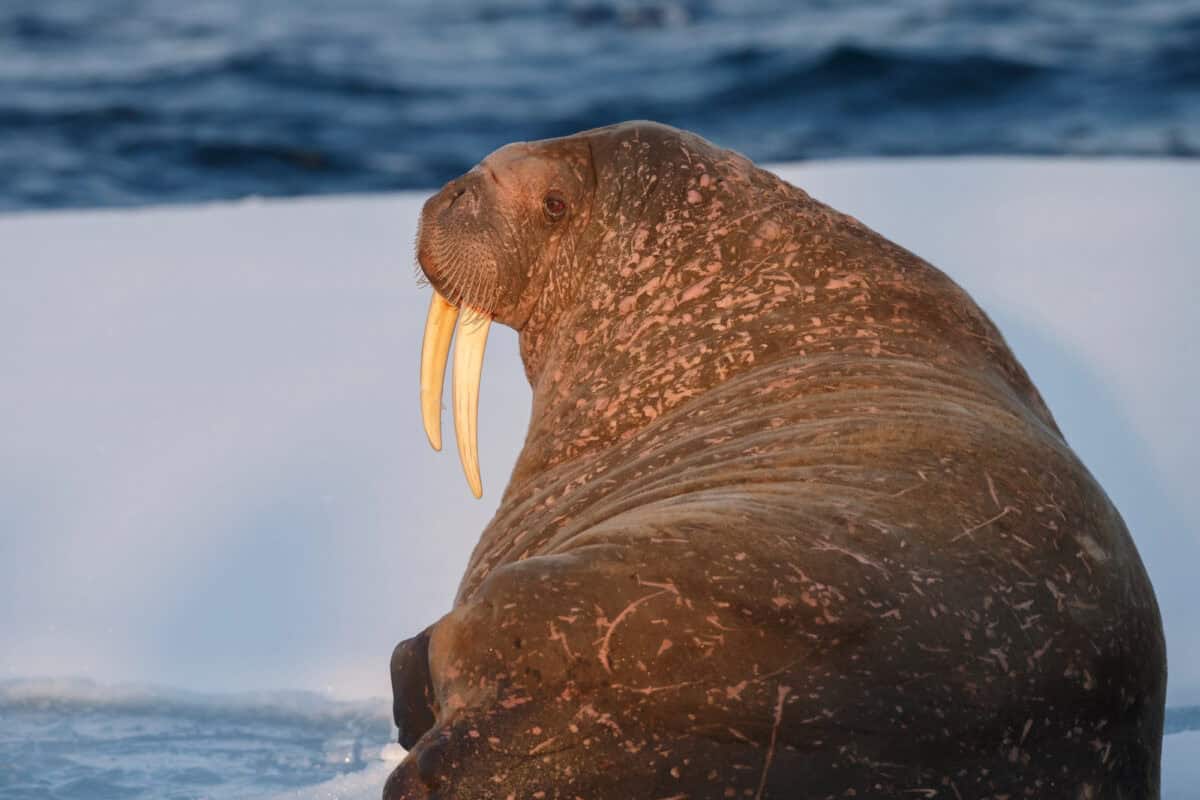
Walruses (Odobenus rosmarus) represent one of the Arctic’s most distinctive marine mammals, having evolved specialized adaptations for life in and around freezing polar waters. These massive pinnipeds can weigh up to 1.5 tons and reach lengths of 12 feet. Their most important cold-weather adaptation is their exceptional blubber layer, which can measure up to 6 inches thick and comprises up to 30% of their total body weight. This blubbery insulation is so effective that walruses often overheat on land despite air temperatures well below freezing, requiring them to thermoregulate by expanding blood vessels in their skin.
Beyond their insulation, walruses possess other notable cold adaptations. Their iconic tusks—elongated canine teeth that can reach 3 feet in length—serve multiple functions in their icy environment, including hauling their massive bodies onto ice floes and breaking breathing holes in thin ice. Their whiskers, containing thousands of sensitive nerve endings, allow them to detect shellfish on dark ocean floors where visibility is poor. Walruses can slow their heart rates while diving, conserving oxygen and staying submerged for up to 30 minutes while hunting in frigid waters. They’re also highly social, often gathering in groups called “haulouts” that can number in the thousands, where shared body heat helps conserve energy in the challenging Arctic environment.
1. Reindeer/Caribou Arctic Nomads with Specialized Adaptations
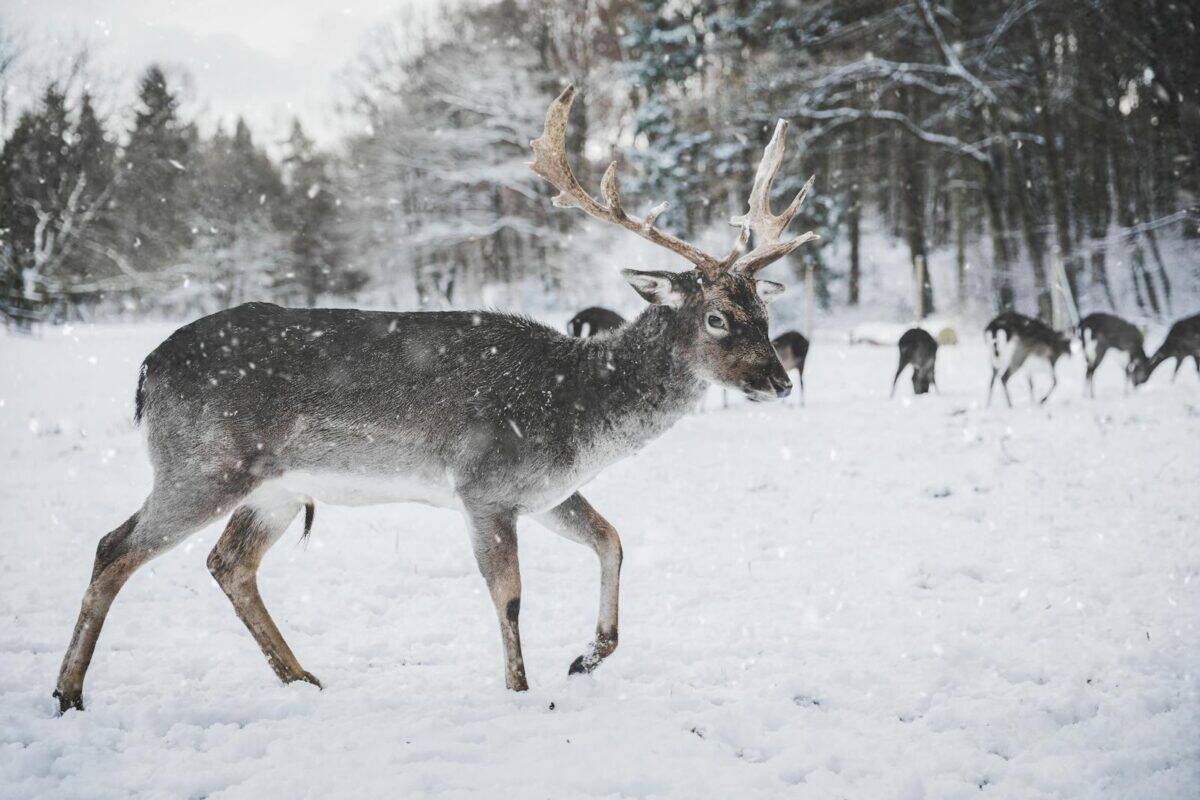
Reindeer and caribou (Rangifer tarandus)—the same species known by different names in Eurasia and North America, respectively—have evolved an extraordinary suite of adaptations for life in the Arctic and subarctic regions. Their specialized fur consists of hollow guard hairs filled with air that provides exceptional insulation while trapping a layer of still air against their skin. This unique coat is so effective that when reindeer lie down on snow, it doesn’t melt beneath them—a testament to their minimal heat loss. Their noses contain elaborate nasal turbinate bones that warm incoming frigid air before it reaches their lungs while recapturing moisture from exhaled breath.
Conclusion:
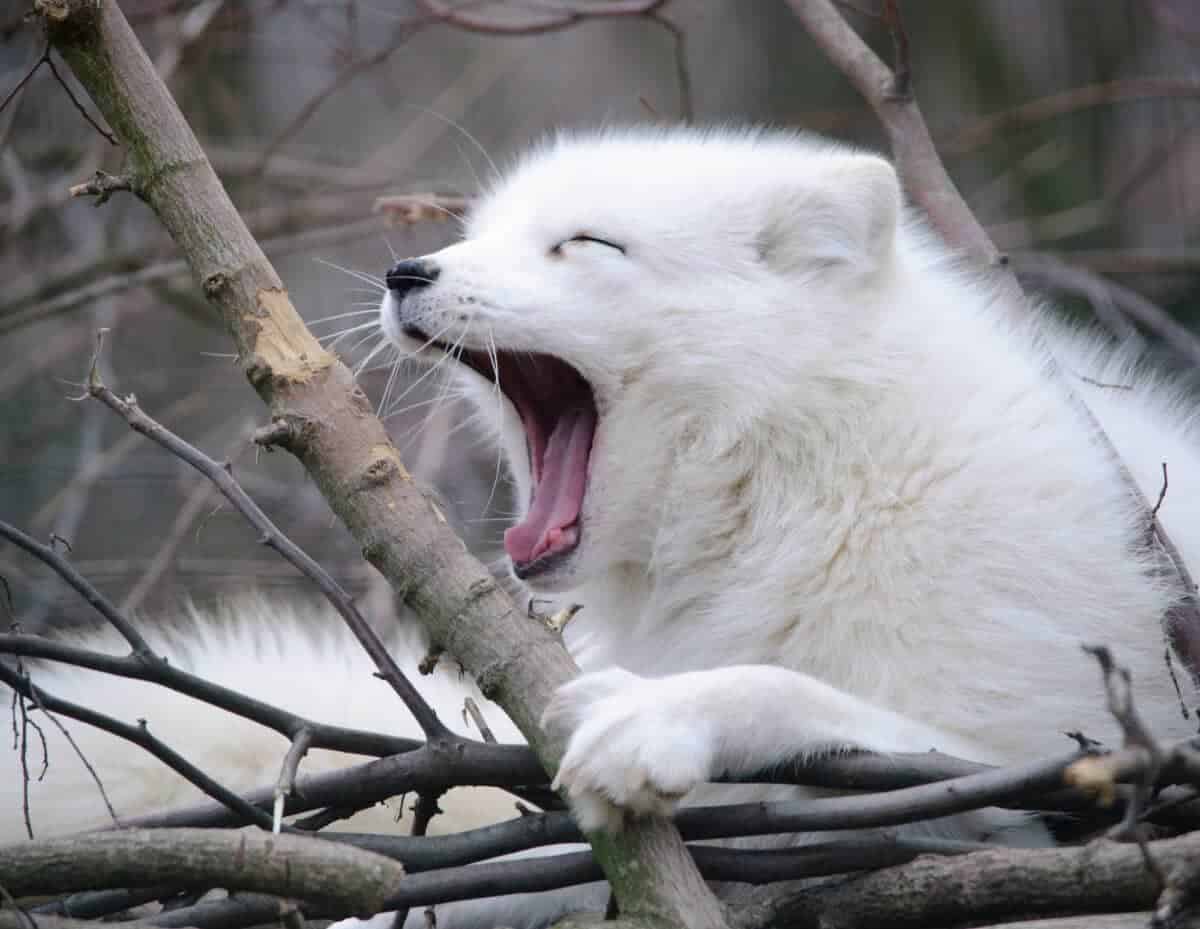
The remarkable animals highlighted in this exploration reveal the extraordinary resilience and adaptability of life in the planet’s harshest environments. From the metabolic feats of the Arctic ground squirrel to the communal warmth of emperor penguins and the thermal efficiency of Arctic foxes, each species has carved out a survival strategy uniquely suited to frigid extremes. These adaptations—honed over millennia—serve as a powerful reminder of nature’s ingenuity in the face of adversity. As climate change accelerates and threatens these delicate ecosystems, understanding and protecting these cold-weather specialists becomes not only a matter of conservation but also a testament to the awe-inspiring complexity and tenacity of life on Earth.
- The Most Beautiful Bird Migration Routes Across the US - August 9, 2025
- 14 Dog Breeds That Love to Cuddle - August 9, 2025
- 11 Signs Your Horse Might Be Bored - August 9, 2025

